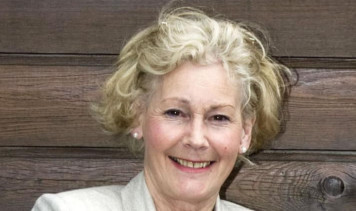As the Scottish Government and its agricultural holdings legislation review group grapple with tenant farming issues, many of them outdated, there is one group of farmers whose interests must not be subsumed in the heat of the present polarised tenancy debates the next generation of farmers.
The farmers of the future are the people who will take Scottish farming plc forward to support the ambitious plans to increase our food and drink exports.
Of course, it is just and right that the needs and concerns of existing tenants are addressed, particularly in view of the difficulty many farmers have in retiring with dignity.
This is one of the main reasons for a lack of much-needed churn in the sector, and means the interests of tenants close to retirement and the farmers of tomorrow are inextricably linked.
However, if we think out of the box, what has been a problem could become an opportunity and that opportunity could be share farming.
As a way forward, government and industry need to look in depth at the potential benefits of share farming.
Featured in the latest BBC Landward programme was a successful share farming arrangement in the Scottish Borders which appeared to be working well, and there are a growing number of people wondering whether there is scope for growth in this area in Scotland.
Although well liked and widely used in America, Australia and New Zealand, there hasn’t to date been significant development of share farming in the UK.
Is it a lack of awareness amongst the industry, or could it be that we’re stuck with the dreaded “it’s aye been done that way” syndrome?
Come on folks, this is the 21st century let’s run with a new idea in a new era.
So how does it work? Share farming is where the owner of farmland enters into a business agreement with a share farmer to enable them to farm all or part of that farmland.
The owner provides the farm, the fixed equipment, the fixed machinery and he also pays for a share of certain input costs.
The share farmer provides the working machinery and the labour and also pays for a share of the input costs.
Each is rewarded by a share of the gross output.
In the case of livestock, landowner and share farmer normally share the ownership of the livestock, but the agreement can be designed to suit the individuals involved. They remain independent, but each brings something of value to the business partnership.
Unlike formal tenancies, share farming is 100% reliant on good personal relationships and both parties being involved in a flexible working partnership and a shared vision.
As an ageing farmer and small-scale landowner, I am an enthusiastic supporter.
The benefits to new entrants also seem clear: less upfront capital, no forced borrowing, access to opportunities despite shortage of available holdings on the open market, and the business can expand and evolve over time. This allows the share farmer to build up capital, generate a bigger output, or perhaps take on a farm of his own.
What a great first step on the ladder.
Share farming seems to deliver the dynamism, flexibility and business partnership approach that many of us are trying to achieve in the agricultural system, and surely should be considered alongside the tenancy vehicles currently available in Scotland.
It offers an alternative way to encourage new blood into the sector, and can take some of the pressure off owner-occupiers looking to ease their own physical input but keep up their farming activity in a way that puts caring for their land and good stewardship at the forefront of their agenda.
No legislative change is required to increase uptake of this model.
Rather, what is required is advice, guidance and awareness raising.
Scottish Land & Estates has called for share farming to be a valued part of our agricultural system, and there is no better time for the industry to work together to see how this opportunity can be grasped.
* Daye Tucker farms at Carbeth Home Farm, Stirlingshire, and is a director of Scottish Land & Estates.
